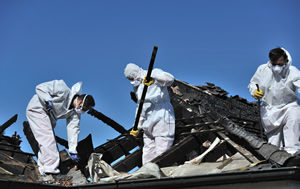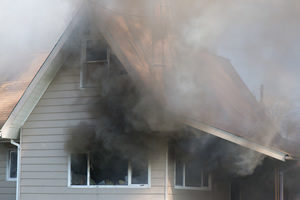Fire and Water Damage Restoration Tips After Disaster Strikes
 When disaster strikes in San Antonio and surrounding area, our homes can be at risk. Unfortunately, there are houses every year that get severely damaged from fire, smoke, water, and other hazards. After a disaster, the first instinct might be to head back into a damaged home to start with smoke damage cleanup or fire and water damage restoration. Here are some tips and things you should do if your home is damaged by a disaster.
When disaster strikes in San Antonio and surrounding area, our homes can be at risk. Unfortunately, there are houses every year that get severely damaged from fire, smoke, water, and other hazards. After a disaster, the first instinct might be to head back into a damaged home to start with smoke damage cleanup or fire and water damage restoration. Here are some tips and things you should do if your home is damaged by a disaster.
Fire and Smoke Damage
After a fire, it can be hard to look at a once beautiful home and take in the destruction and damage. You may want to get in there and start with the cleanup right away. However, being too hasty can make it even more difficult for proper fire and water damage restoration. Make sure to stick to things that are safe for you to do.
You can clean faucets and other chrome components with detergent. Then, you can protect them with some Vaseline. Open your windows to ventilate the home. You can do some light smoke damage cleanup by vacuuming up smoke particles from your carpeting and upholstery. If your power was disconnected, then make sure to remove anything from your refrigerator and freezer. You should also keep the doors open to allow air to circulate. If it is extremely cold, which does not happen often in San Antonio and surrounding area, then you may need to put antifreeze down your drains to prevent the pipes freezing. Don’t try to wash the walls of any residue or try to do any major smoke damage cleanup. You may end up making the damage worse or harder to clean by the professionals.
Water Damage
There are several things that can cause water damage to your home. Pipes can break, drains can get blocked, storms can cause water buildup, and appliances can malfunction. Cleaning up afterward depends on the type of damage.
A lot of the water that gets into your home may have contaminants and bacteria that could be harmful to human health. You can ventilate areas where there is water damage. Air conditioning can help with this, as well as fans and opened windows. Sponge and blot any standing water, since that can be a magnet for bacteria and even insects. If there are soaked carpets and rugs, get them off any floors and place them somewhere they can dry. Remove any electronics that are at risk and could pose an electrocution threat. Do not turn on any electronics while standing in water. Also, do not use heat to try to dry out wet spaces. It may cause more mildew and moisture damage.
Raw Sewage and Flooding
As mentioned, some of the water that gets into your home may contain contaminants. If sewage and flood waters are getting into your home, then exposure to dangerous bacteria and microorganisms is possible. Touching them or inhaling them can be a serious risk. Treat any wet surface as contaminated until it is sanitized by professionals. Children and pets should stay away from any affected areas. Do not try to decontaminate the areas yourself with over the counter products. They may not do a thorough enough job for the type of bacteria you are dealing with.
Fire and Water Damage Restoration
Follow these tips to know what you can and cannot handle when it comes to fire and water damage restoration. Contact Vintage Reconstruction to help you get back on your feet after a disaster.
